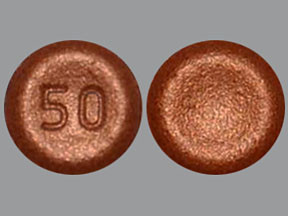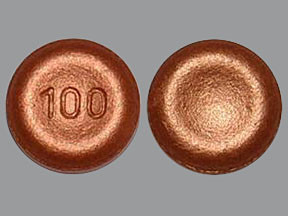SAFINAMIDE - ORAL
PHONETIC PRONUNCIATION: (sa-FIN-a-mide)
COMMON BRAND NAME(S): Xadago
GENERIC NAME(S): safinamide mesylate
Uses
USES: Safinamide is used with another medication (levodopa/carbidopa) to treat symptoms of Parkinson's disease. It can help improve symptoms such as shakiness, stiffness, and difficulty moving. It can also help reduce the amount of "off" time (periods of slow movement or stiffness). Safinamide belongs to a class of drugs known as MAO inhibitors. It works by increasing the levels of certain natural substances in the brain (such as dopamine). Parkinson's disease is thought to be caused by too little dopamine in the brain.
How to use SAFINAMIDE - ORAL
HOW TO USE: Read the Patient Information Leaflet if available from your pharmacist before you start taking safinamide and each time you get a refill. If you have any questions, ask your doctor or pharmacist. Take this medication by mouth with or without food as directed by your doctor, usually once daily. The dosage is based on your medical condition and response to treatment. Do not increase your dose or take it more often than prescribed. Your condition will not improve any faster, and your risk of side effects will increase. Use this medication regularly to get the most benefit from it. To help you remember, take it at the same time each day. Do not stop taking this medication without consulting your doctor. Some conditions may become worse when this drug is suddenly stopped. Your dose may need to be gradually decreased. A very serious high blood pressure reaction may rarely occur if you eat a large amount of tyramine while taking safinamide and for 2 weeks after you stop it. Avoid foods that are high in tyramine, like aged cheeses (such as Stilton cheese). Consult your doctor or dietician about which foods you should avoid and if you do not feel well after eating or drinking certain foods while taking this medication. See also Side Effects section. Tell your doctor if this medication stops working well or if your condition gets worse.
Side Effects
Precautions
Interactions
Overdose
Images
Reviews
Faq for SAFINAMIDE - ORAL
Safinamide is an oral medication used to treat the symptoms of Parkinson's disease. It belongs to a class of drugs called MAO-B inhibitors.
Safinamide works by increasing the levels of certain brain chemicals that are involved in motor control. It helps to improve muscle stiffness, tremors, and overall movement in Parkinson's disease patients.
Common side effects of Safinamide may include nausea, headache, dizziness, insomnia, dyskinesia (uncontrolled movements), or abdominal pain. It is important to inform your doctor if any severe or persistent side effects occur.
Yes, Safinamide is often prescribed in combination with levodopa/carbidopa or other Parkinson's disease medications to provide enhanced symptom relief. However, it is important to consult your doctor before making any changes to your medication regimen.
The recommended starting dose of Safinamide is 50 mg once daily, taken orally with or without food. Your doctor may adjust the dose based on your individual response and tolerability. It is important to follow your doctor's instructions regarding dosage.
Yes, Safinamide may interact with certain medications, including antidepressants, monoamine oxidase inhibitors (MAOIs), ciprofloxacin, and other drugs that increase serotonin levels. Inform your doctor about all the medications you are taking to avoid potential drug interactions.
The safety of Safinamide in pregnancy or breastfeeding has not been established. It is important to discuss the risks and benefits with your doctor before using this medication if you are pregnant or breastfeeding.
If you miss a dose of Safinamide, take it as soon as you remember. However, if it is close to the time for your next dose, skip the missed dose and continue with your regular dosing schedule. Do not double the dose to make up for a missed one.
The onset of action of Safinamide may vary among individuals. Some patients may experience noticeable improvements in symptoms within a few weeks, while others may take longer. It is important to be patient and continue taking the medication as directed by your doctor.
Safinamide is usually taken orally twice a day, with or without food. It is important to follow the prescribed dosage and schedule as directed by your doctor.
No, Safinamide is used as an adjunctive therapy along with other medications for Parkinson's disease, such as levodopa/carbidopa. It is not intended to be used as a standalone treatment.
Safinamide may interact with certain medications like selegiline, fluoxetine, and meperidine. It is important to inform your doctor about all the medications you are currently taking or planning to take to avoid any potential interactions.
No, Safinamide is not a cure for Parkinson's disease. It helps in controlling the symptoms and improving motor function, but it does not cure the underlying condition.
The effects of Safinamide may vary from person to person. Some individuals may experience improvement in symptoms within a few days, while others may take several weeks to see the full benefit. It is important to be patient and continue taking the medication as prescribed.
The safety of Safinamide during pregnancy and breastfeeding is not well-established. It is recommended to consult with your doctor if you are pregnant, planning to become pregnant, or breastfeeding before starting Safinamide.
Disclaimer
IMPORTANT: HOW TO USE THIS INFORMATION: This is a summary and does NOT have all possible information about this product. This information does not assure that this product is safe, effective, or appropriate for you. This information is not individual medical advice and does not substitute for the advice of your health care professional. Always ask your health care professional for complete information about this product and your specific health needs.


No Reviews Yet